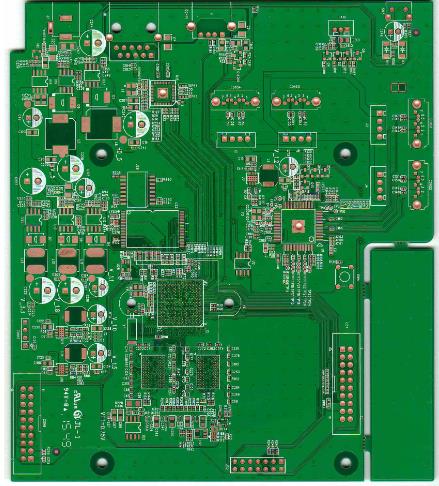The production process of flexible printed circuit boards is basically similar to the production process of rigid boards. For some operations, the flexibility of the laminate requires different devices and completely different processing methods. Most flexible printed circuit boards use negative methods. However, some difficulties have arisen in the mechanical processing and coaxial processing of the flexible laminate. One of the main problems is the processing of the substrate. Flexible materials are rolls of different widths, so during etching, the transfer of flexible laminates requires the use of rigid trays.
In the production process, the handling and cleaning of flexible printed circuits is more important than handling rigid boards (Lexin, 1993). Incorrect cleaning or operation in violation of regulations may lead to subsequent failures in product manufacturing. This is due to the sensitivity of the materials used in the flexible printed circuit. The flexible printed circuit plays an important role in the manufacturing process. The substrate is affected by mechanical pressure such as wax drying, lamination, and electroplating. The copper foil is also susceptible to knocking sound and dents, and the extended part ensures maximum flexibility. Mechanical damage or work hardening of the copper foil will reduce the flexible life of the circuit.

During manufacturing, typical flexible single-sided circuits need to be cleaned at least three times. However, multi-substrates need to be cleaned 3-6 times due to its complexity. In contrast, rigid multilayer printed circuit boards may require the same number of cleaning times, but the cleaning procedures are different, and more care needs to be taken when cleaning flexible materials. Even if it is subjected to very light pressure during the cleaning process, the dimensional stability of the flexible material will be affected, and it will cause the panel to elongate in the z or y direction, depending on the bias of the pressure. The chemical cleaning of flexible printed circuit boards should pay attention to environmental protection. The cleaning process includes alkaline dye bath, thorough rinsing, micro-etching and final cleaning. The damage of the film material often occurs during the process of loading the panel, when the tank is agitated, when the rack is removed from the tank or without a rack, and the surface tension is destroyed in the clean tank.
The holes in the flexible board are generally punched, which leads to an increase in processing costs. Drilling is also possible, but this requires special adjustment of the drilling parameters to obtain a smear-free hole wall. After drilling, remove the dirt from the drilling in a water cleaner with ultrasonic agitation.
It has been proven that the mass production of flexible boards is cheaper than rigid printed circuit boards. This is because flexible laminates enable manufacturers to produce circuits on a continuous basis. This process starts with laminate coils and directly produces finished boards. In order to manufacture a printed circuit board and etch a continuous processing diagram of a flexible printed circuit board, all the production processes are completed in a series of machines placed in sequence. Screen printing may not be part of this continuous transfer process, which caused an interruption in the online process.
Generally, soldering in flexible printed circuits is more important due to the limited heat resistance of the substrate. Manual soldering requires sufficient experience, so if possible, wave soldering should be used. When soldering flexible printed circuits, you should pay attention to the following:
1) Because polyimide is hygroscopic, the circuit must be baked before soldering (for 1h at 250°F).
2) The pad is placed on a large conductor area, such as the ground plane, power plane or heat sink, and the heat dissipation area should be reduced, as shown in Figure 12-16. This limits the heat dissipation and makes welding easier.
3) When manually soldering pins in dense places, try not to continuously solder adjacent pins, but move the soldering back and forth to avoid local overheating.
Information about flexible printed circuit design and processing can be obtained from several sources, but the best source of information is always the manufacturer/supplier of processed materials and chemicals. Through the information provided by the supplier and the scientific experience of processing experts, high-quality flexible printed circuit boards can be produced.